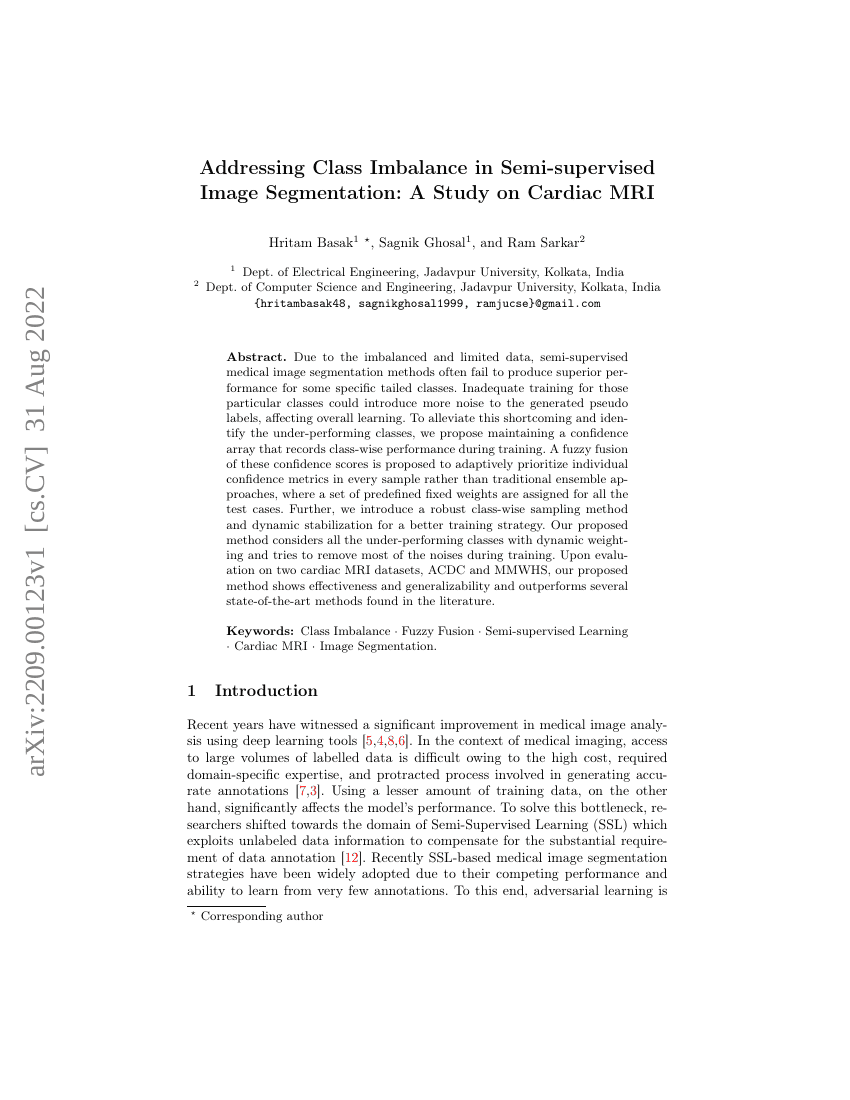Command Palette
Search for a command to run...
Addressing Class Imbalance in Semi-supervised Image Segmentation: A Study on Cardiac MRI
Hritam Basak Sagnik Ghosal Ram Sarkar

Abstract
Due to the imbalanced and limited data, semi-supervised medical image segmentation methods often fail to produce superior performance for some specific tailed classes. Inadequate training for those particular classes could introduce more noise to the generated pseudo labels, affecting overall learning. To alleviate this shortcoming and identify the under-performing classes, we propose maintaining a confidence array that records class-wise performance during training. A fuzzy fusion of these confidence scores is proposed to adaptively prioritize individual confidence metrics in every sample rather than traditional ensemble approaches, where a set of predefined fixed weights are assigned for all the test cases. Further, we introduce a robust class-wise sampling method and dynamic stabilization for a better training strategy. Our proposed method considers all the under-performing classes with dynamic weighting and tries to remove most of the noises during training. Upon evaluation on two cardiac MRI datasets, ACDC and MMWHS, our proposed method shows effectiveness and generalizability and outperforms several state-of-the-art methods found in the literature.
Benchmarks
| Benchmark | Methodology | Metrics |
|---|---|---|
| semi-supervised-medical-image-segmentation-on | ACINet | DSC: 81.5 |
Build AI with AI
From idea to launch — accelerate your AI development with free AI co-coding, out-of-the-box environment and best price of GPUs.